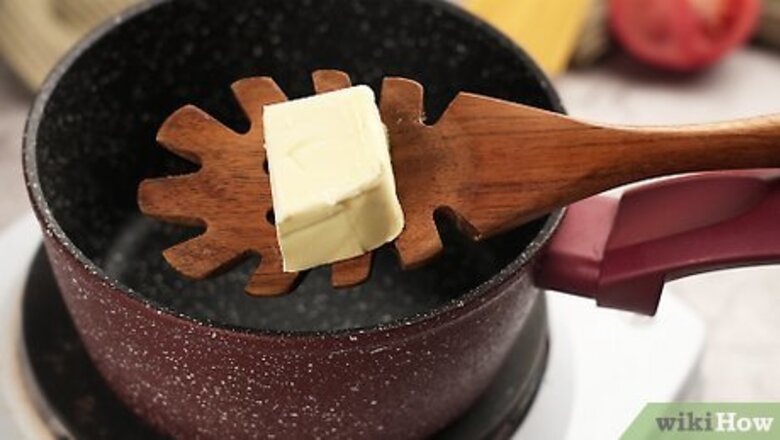
views
- Mix 2 tablespoons (16 g) of flour with 1/4 cup (60 mL) of cold water, then add to your sauce and stir over medium heat until it thickens.
- Alternatively, create a sauce-thickening roux by whisking 1 tbsp (15 g) of butter and 1 tbsp (9 g) of salt together, then adding the mixture to your sauce.
Roux Blend
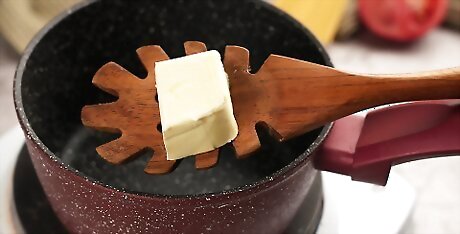
Melt the butter in a saucepan over medium heat. Begin by melting 1 tbsp (15 grams) of butter in a small saucepan. You will know the butter is heated when you can sprinkle a pinch of flour over it and the mixture slowly starts to bubble. You can substitute oil for the butter to make it a dairy-free option.
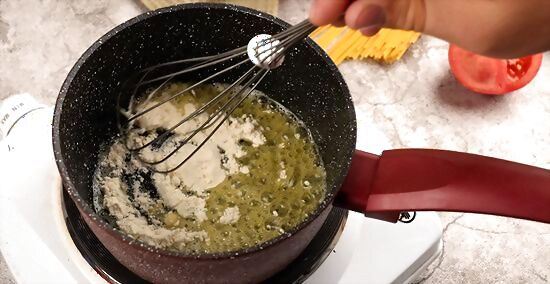
Whisk 1 tbsp (9 grams) of flour into the butter until a thick paste forms. Keep the mixture over medium heat. Whisk it constantly while the flour begins to bubble. As the flour and butter cook, they will become smooth and start to thin.

Stir the mixture while you cook it for 5 minutes. Roux does not take long to prepare. It is done when the flour loses its raw smell, and it becomes a thin, white paste. Use roux to thicken milk-based sauces, such as cheese sauce for macaroni and cheese. You can let the roux cook longer to get a blond, brown, or dark brown roux, but these are commonly used to thicken soups and chowders, not sauces.
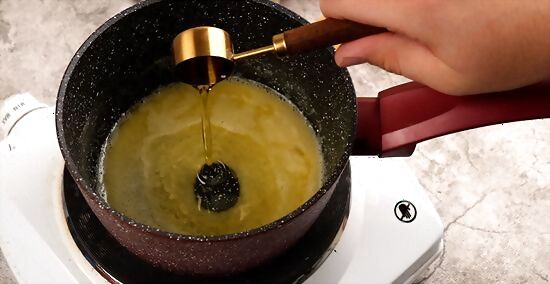
Add room temperature roux to your hot liquid. Whisk the mixture vigorously. Cool your hot roux in the fridge or let it sit out on the counter until it reaches room temperature. Hot roux can be added to cold or warm sauces right away. Do not add hot roux to a hot liquid, as it will create lumps that can not be removed unless you use a strainer.

Boil the sauce 1 minute on high. Turn the stove heat up to high and allow your sauce to come to a boil. The mixture will only take about 1 minute to begin thickening. Keep your sauce at a boil until it has reached your desired thickness.
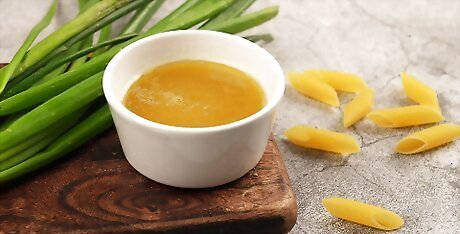
Pour any leftover roux onto a baking sheet or ice cube tray. Place your roux in the refrigerator to let it cool overnight or until it has hardened. Keep any leftover roux in an airtight container and freeze it or refrigerate it for up to a month. Roux made with oil can be stored at room temperature for 2-4 weeks.
Beurre Manié
Mix equal parts of softened butter and flour in a small bowl. Start with 1 tbsp (15 grams) of butter and 1 tbsp (9 grams) of flour and add more as needed. Soften the butter by placing it in the microwave for 5-10 seconds at a time. Do not melt the butter completely.
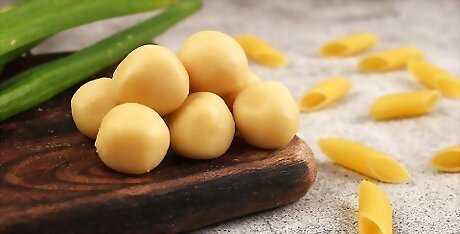
Knead the mixture and roll the paste into ½-teaspoon-sized amounts. You can mix the butter and flour with a fork until it’s smooth. Use your fingers to knead the mixture until it has formed a paste. You can make larger amounts of beurre manié in a food processor and store the balls in the freezer. Bring them to room temperature before use.
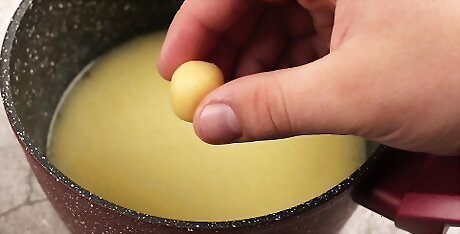
Whisk in 1 ball at a time to your simmering sauce. Once you have thoroughly mixed in the beurre manié balls, return the sauce to a boil and cook it for at least 1 minute. Add in another beurre ball until you get your desired thickness. Beurre manié is great to use for a sauce that has already been prepared but needs some added thickness. This works really well in pan sauces for shrimp scampi, turkey, or soups.
Egg Yolks

Whisk the egg yolks in a pan over low heat. Use 1 egg yolk for every 1 cup (240 mL) of liquid you need to thicken. Whisk the yolks until they are loosened. If you are using a whole egg, separate the whites from the yolk before whisking.
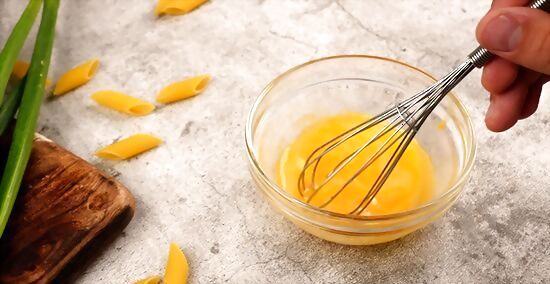
Add 2 US tbsp (30 mL) of hot water to the egg yolks. This will temper the eggs and increase their temperature. The hot water will heat the eggs without making them too hot and causing them to cook.

Whisk the eggs into your sauce and simmer over medium heat. Your sauce should be hot when you add in the eggs. Whisk the sauce continuously while it simmers. Make sure to scrape the sides and bottom of the pan as you stir. This will ensure that the sauce doesn’t stick to the pan or burn.

Allow the sauce to boil for 1 minute. Do not let the sauce boil for too long. Once it reaches its boiling point, 1 minute will be plenty of time for the sauce to thicken. Since you are using raw eggs, you much check the temperature of your sauce to eliminate the possibility of bacteria. The sauce must be at least 160 °F (71 °C) before it is safe to serve.
Flour Slurry
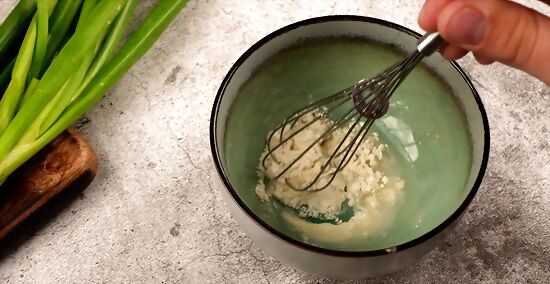
Make a flour slurry to thicken creamy sauces. Combine equal parts of flour and cold water in a cup. Mix it until it’s smooth and stir it into the sauce. Bring the sauce to a simmer for 5 minutes. A general rule is use 2 tsp (3 grams) of flour to thicken 1 L (34 fl oz) of liquid.
Reduction Method
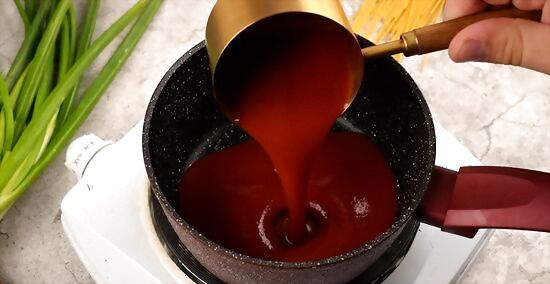
Use the reduction method for tomato-based sauces. This method takes a little longer than the others, but it works well for thickening tomato-based sauces. Keep the sauce on medium heat, remove the lid from the pan to allow the liquid to evaporate until your sauce reaches your desired consistency. You can also use this method to thicken BBQ sauce.
Low Heat
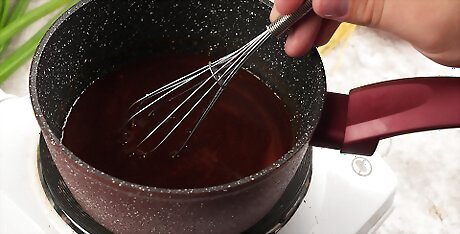
Thicken teriyaki sauce by cooking over low heat. Teriyaki sauce is one of the few sauces that will thicken if left over low heat. Remove the sauce from heat when it starts to get a syrupy consistency.
Almond or Cashew Puree

Puree almonds or cashews for a vegan option. Soak the nuts in water until they are soft. Puree them until they have formed a smooth, thin paste. Add them to your sauce, whisking the sauce vigorously while it cooks over low heat. This option works well for adding thickness to Indian-style sauces.
Arrowroot
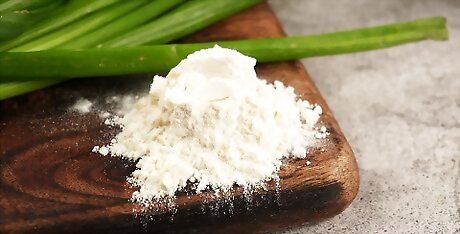
Try arrowroot if you’re on a paleo diet. Arrowroot is also gluten-free and grain-free. It has no taste to it and will leave your sauce with a glossy and clear finish. Arrowroot can be used in any sauce that you would normally use cornstarch to thicken it.



















Comments
0 comment